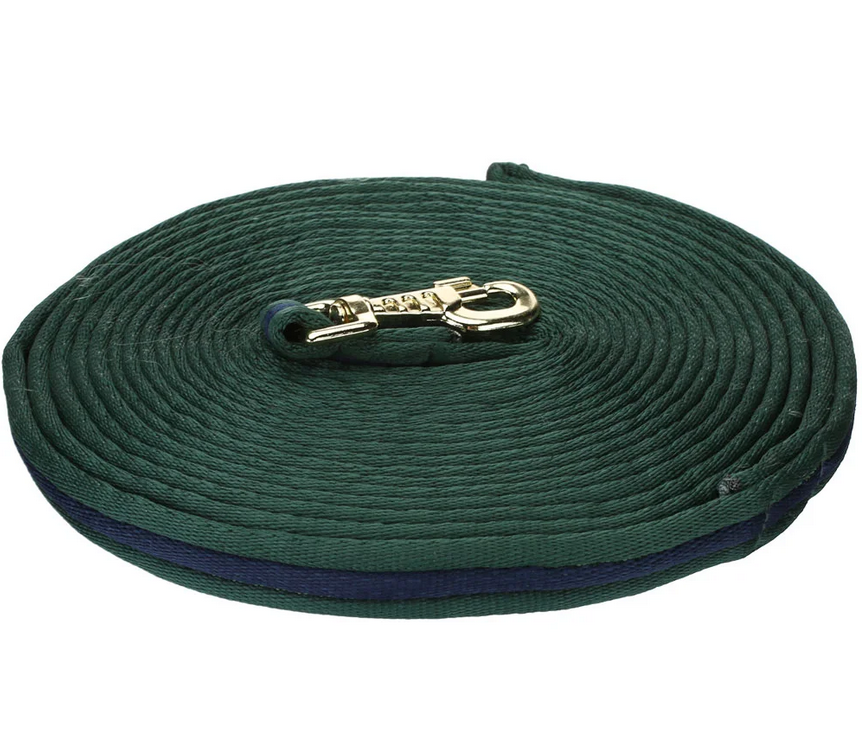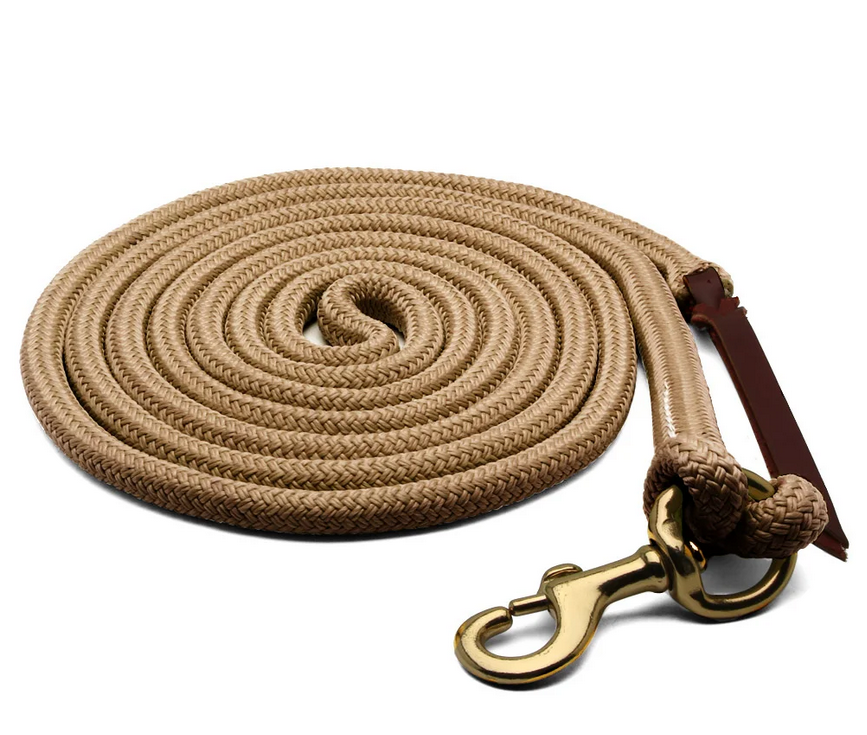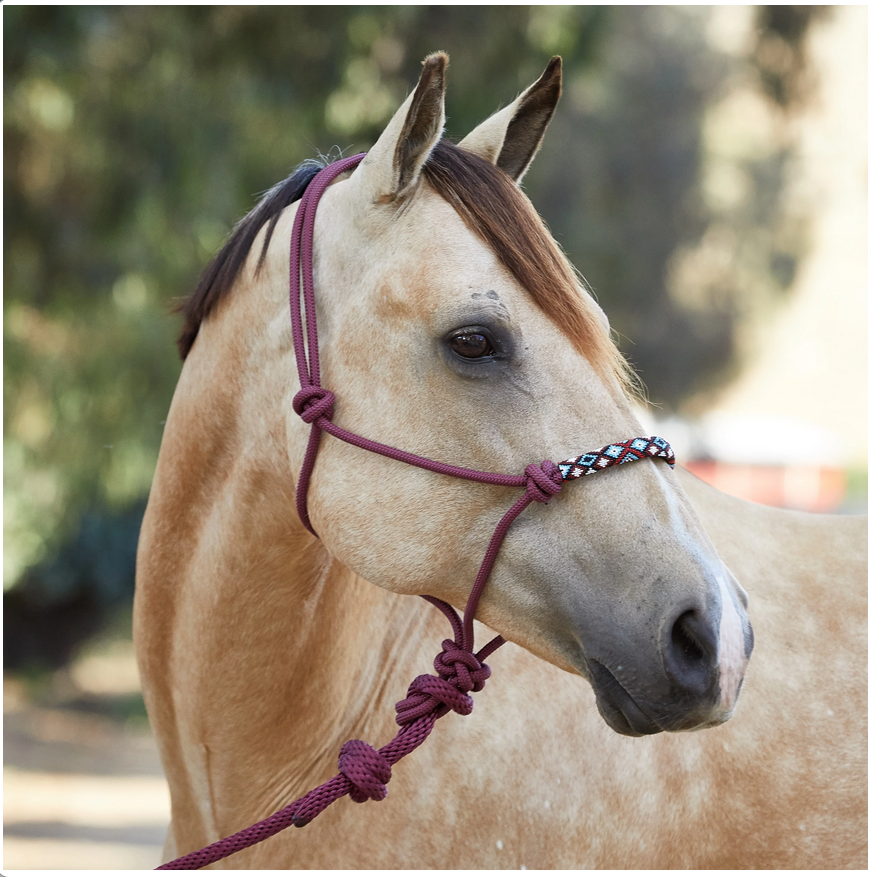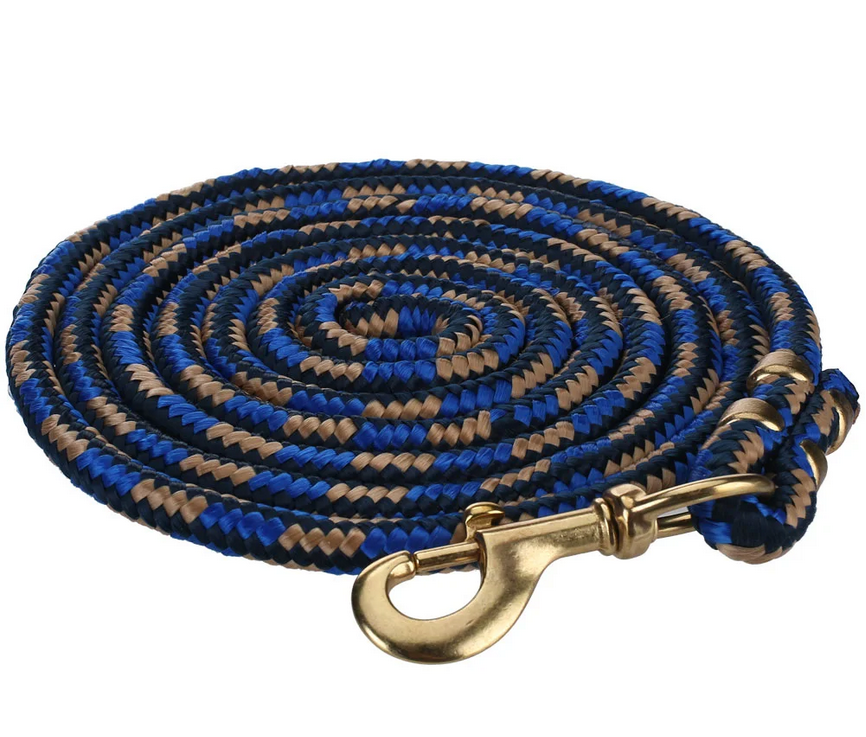The horse lead rope is attached to the halter and allows the handler to lead the horse and tie it up. Pretty simple right? Well, yes, but no. Horse lead ropes are often also used as training tools especially in natural horsemanship circles. Yet, they all enable a handler to lead and tie a horse with a halter.
Gathering input from readers through a short survey of six questions yielded information regarding lead ropes. The following is based on discoveries made through the readership survey with a little more research adding to the results. The information is presented here for educational purposes only.
Come ride along with me! Get your riding the SLO County Trails Hotsheet to get started and join the SLO Horse News Herd!
Same Lead Rope Attributes No Matter the Purpose?
The primary a-ha moment discovered through the survey gave root to the understanding of the purpose of a lead rope. Are the same attributes of horse lead ropes desirable no matter the purpose? No. The purpose of the lead rope dictates the length, end popper, material and even the snap. Is the purpose simply for leading and tying up or is it a communication tool as well? That depends on the handler.
Hey, head’s up. Purchasing products through clicking the the links or product pics that follow may result in providing us a little kick-back money. To learn more see the affiliate disclaimer near the end of this story.
A Tool for Communication
The readership survey uncovered the idea that some horsemen consider the lead rope to be a tool for communication. This got me thinking. Equestrians who use “natural horsemanship” training methods primarily view a horse lead rope more as a tool for communication with their horse than simply needing it to lead and tie the horse up.
The survey didn’t directly ask about this correlation, yet the results inferred this idea. My guess is that natural horsemanship equestrians are most likely the ones who have high opinions of yacht rope lead ropes with or without a popper and many in this camp prefer no snap.
Readers Confirm Use as a Communication Tool
This point was confirmed by a reader who responded, “The feel of a yacht rope lead rope allows you to send and receive energy through the rope. This allows for the lead rope to be more of a tool for communication rather than just to tie or simply lead a horse from point A to point B.” She went on to say, “Since the methods of communicating with the horse have to do with body language and energy. The lead rope acts as a sort of extension of both the horse and the human.”
Another reader responded, “Communication is established through the lead rope, so it should have “life”, yet be able to release in a nano-second.”
Question #1 How important is it for you to have the right kind of lead rope?
92% of responses said it is very important to have the right kind of lead rope. The rest considered a lead rope to be somewhat important.
Comments made included:
- “The job of a lead rope can determine the health and safety of your horse.”
- “Very important. In the event of an emergency, it might be your only connection to your horse.”
- “Main tool for all ground communication.”
Leading or Lunging?
All lead ropes can be used for leading and tying. However, the longer lead ropes requires the handler to manage more rope which could get cumbersome. One aspect of groundwork often seen in natural horsemanship, involves making the horse go around the handler in a circle with the handler stationary. A longer lead rope, 12-14 ft, is needed in this case. Yet, this does beg the question, “Isn’t that lunging?” The answer is no.

Lunging asks the horse to go around in a bigger circle often with the handler walking the circle with the horse. A lunge line is 26-30 ft long and is usually flat nylon. Handlers should always wear gloves when lunging a horse.
Material and Shape Matter
Most equestrians consider the lead rope to be a very important piece of equipment. The material is also considered very important because it impacts the functionality of the lead rope. Due to the flight nature of a horse the reality of experiencing a lead rope running through a handler’s hands is very commonplace. Therefore, the material and shape of the lead rope must be considered.
A round rope is preferred over flat rope. Cotton braided is very common and popular, but those who use nylon have found the material to hold up better and provide less tightening when a horse pulls back. Nylon may be more likely to burn the hand if slid through quickly. To help prevent rope burn and protect the hands in general, horse handlers should wear gloves.
Issues with Lead Rope Materials
When asked to provide input on lead rope materials several readers had comments. One responded, “If a horse pulls back when tied up, the lead rope can end up really tight. A cotton rope gets tighter and can’t be pulled back through. A flat braided rope does the same. A round nylon rope can be more easily undone quickly. Never let them get old, and don’t use the thin flimsy kind.”
Another reader addressed the difference between cotton and nylon. Her response, “I don’t like them too floppy (cotton ones) because I can’t effectively use it to direct them or as the occasional reprimand to remind them to mind their manners without me having to strike them directly. Nylon leads or preferably the ones with a leather bit on the end work best for both purposes.”
Question #2 What lead rope material do you prefer?
46% prefer braided cotton lead ropes
31% prefer other with most specifying yachting rope
23% Checked braided nylon
What About the Lead Rope Snaps?
Snaps are an important part of a horse lead rope. Most respondents prefer a spring trigger style of snap. This is because they are the easiest to open with one hand. A bull snap is considered to be more stout but more difficult to open. Several responders preferred no snap. Instead, they look for a lead rope that is already attached to the halter.

Several comments were made regarding snaps breaking when horses pulled back hard on them. Lead rope snaps are actually designed to break with 1200 lbs of pressure. This is probably a good thing and may actually help prevent injury to the horse.
My Horse Pulled Back and Broke the Snap
I experienced this one day at a horse show. Arriving a little behind schedule caused me to inadvertently skip releasing my horse tied in the horse trailer. I opened the back of the trailer and asked her to step out. My horse did as requested yet didn’t know she was still tied. Pulling back resulted in breaking the snap while coming out in a rush. Fortunately, neither of us were hurt and an extra lead was utilized the rest of the day.
Question #3 What kind of snap do you prefer?
62% trigger snap
23% other * majority of these responses mentioned no snap – using a lead rope already attached to the halter.
15% bull snap
How the Snap is Attached is Important

Snaps are attached to lead ropes in several ways. A cotton lead rope is re-braided back to itself which can eventually become unraveled.
Nylon lead ropes have clamps. Some handlers have experienced the clamp coming open and breaking. An effective clamp attachment method is a heat-sealed clamp. Communicating to the horse may be hampered with a clamp if the lead rope is purposed for that job. Additional snap attachment methods involve knots securing the snap or attaching directly to the halter.
Just a note, the survey did not cover this topic but the issue came up through comments and subsequent research.
In the end, horse lead rope choice mostly comes down to personal choice, but it is good to consider other perspectives. A lead rope has limited purpose detached from a halter. These two pieces of tack are used together.
Product photos courtesy of Riding Warehouse. Story photos: Sharon Jantzen Photos.
Just so you know, clicking the above picture and product links takes you to the product on the Riding Warehouse website. This makes shopping easy and convenient for you. We do get a little kick-back from items purchased, giving us resources to bring you more stories, but your price stays the same. It’s a win-win! Riding Warehouse ships free to CA addresses. Local riders can skip the delivery wait by ordering items online and requesting pick-up – during checkout – at the Riding Warehouse store in San Luis Obispo. Happy Trails!

Get going! Looking for trails to ride in SLO County? This hotsheet will get you going on a few of the top rides. Get this delivered to your e-mail and join the SLO Horse News herd to stay up-to-date on herd happenings. Click here > SLO County Trails Hot Sheet to get going!







